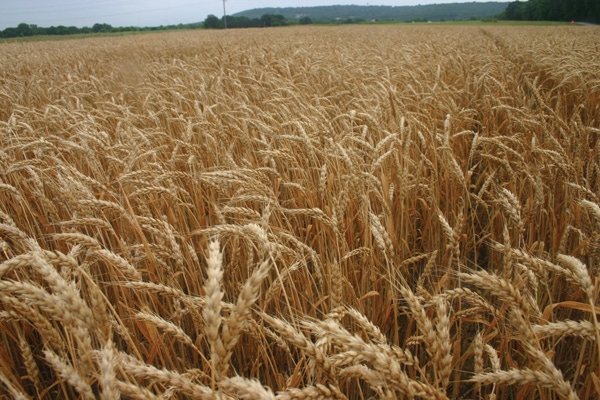July 18, 2011

Market signals indicate that wheat prices have bottomed out, at least momentarily. To reestablish the downtrend, the Kansas City Board of Trade September wheat contract price must close two consecutive days below $7. To establish an uptrend, the KCBT Sept contract must close two consecutive days above $8.
On May 27, Oklahoma cash wheat prices were about $8.80, and Texas panhandle wheat prices about $8.65. On May 27, the KCBT Sept wheat contract price closed at $9.61.
Wheat prices bottomed out on June 29 with Oklahoma prices about $6.65 and Texas panhandle prices about $6.50. On June 29, the KCBT Sept wheat contract price closed at $7.07.
From a technical analysis, the KCBT Sept wheat contact is trading in 50 cent increments ($7, $7.50, $8). The downtrend continued until the Sept contract price tested the $7 support level on July 1. The daily low was $6.95. The close on July 1 was $7.11. The $7 support price was tested again on July 12 with a daily low of $6.93 and a close at $7.33.
Since July 12, the KCBT September Wheat contract price has increased to $7.56. September contract prices have established a sideways pattern between $7 and $8.
On July 12, the USDA released the WASDE (World Agricultural Supply and Demand Estimates) report. The market reaction to the production, use and ending stocks estimates were positive. Wheat closed 22 cents higher on July 12 and corn closed 21 cents higher. Soybeans only closed 11 cents higher.
The positive news for wheat was that 2011/12 marketing year (June 1 through May 31) ending stocks were projected to be 670 million bushels. Wheat ending stocks for 2010/11 were 861 million bushels.
World wheat 2011/12 wheat ending stocks were projected to be 6.7 billion bushels. This is down from 6.8 billion bushels projected in the June report and 7.0 billion bushels for the 2010/11 marketing year.
Corn 2011/12 marketing year (August1 through July 31) ending stocks were projected to be 870 million bushels. The average of market analysts’ estimates prior to USDA’s release was over 1.0 billion bushels.
The wheat marketing year price trend is normally set in late-August and early-September. By September, the European Union and former Soviet Union countries are harvesting wheat, and wheat production in the Northern Hemisphere is more certain. New crop wheat from these countries is also available for export.
The “joker in the deck” is the fund markets. Indications are that the funds, at least for the near future, will stay neutral to long (buying). This supports sideways to slightly higher prices.
Both the technical and fundamental (supply and demand) market signals indicate that wheat prices have bottomed out and have created a sideways price trend. The way to market wheat in this environment is to have a written plan and the discipline to follow it. If you do not have a plan, staggering sales between September 1 and December 1 should be a sound strategy.
You May Also Like




